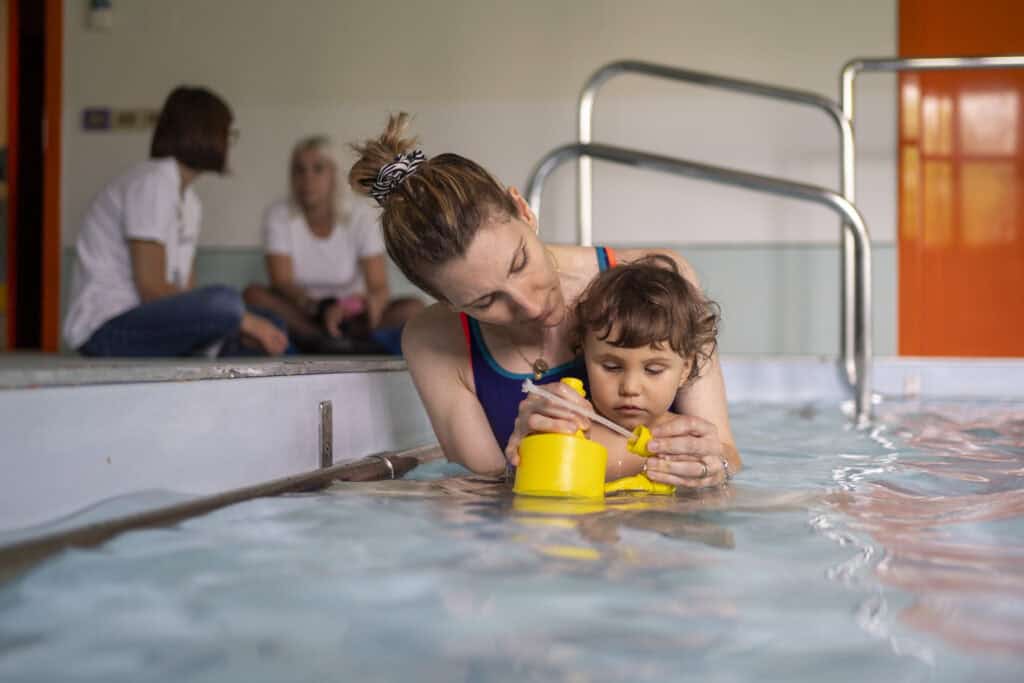The aquatic context, thanks to its peculiar properties (less gravity, warmth, fluidity), promotes relaxation, containment, stabilization, support, and buoyancy toward the discovery of self and one’s psychomotor possibilities. The use of the natural element, as a space that welcomes and supports, but at the same time as a tool for play, facilitates motor initiative by especially those children who, also in relation to visual impairment, often appear fearful in the face of a reality that they struggle to perceive and that can frighten them.
In addition, the creation of a condition of overall well-being promotes the use of the visual resources possessed, also supported by the introduction of specific visual facilitators in an aquatic context.
